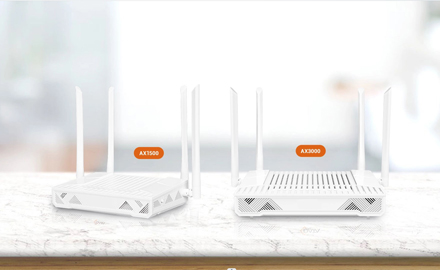Configuring an Optical Line Terminal (OLT) is a critical aspect of deploying and managing a Passive Optical Network (PON). The OLT serves as the central point in a PON, connecting the service provider's network to the end-user's premises through Optical Network Units (ONUs) or Optical Network Terminals (ONTs). This comprehensive guide will delve into the fundamental principles of OLT configuration, covering key aspects such as hardware setup, software configuration, service provisioning, and performance optimization.

I. Introduction to OLT and PON:
Before diving into the configuration principles, it's essential to understand the basics. An OLT is a key component in a PON, a high-capacity, cost-effective broadband access solution. PON architecture leverages fiber-optic cables to deliver services to multiple users, with the OLT acting as the gateway. The OLT translates data between the service provider's core network and the optical signals used in the PON.
II. Hardware Setup:
1. Rack Installation:
- Mounting the OLT in a standard rack.
- Ensuring proper ventilation and temperature control.
2. Power Supply:
- Connecting redundant power sources for reliability.
- Verifying power input and output levels.
3. Fiber Connections:
- Establishing connections to upstream fibers from the service provider's network.
- Connecting downstream fibers to splitters leading to individual ONUs/ONTs.
4. Network Interfaces:
- Configuring Ethernet interfaces for communication with the core network.
III. Software Configuration:
1. Access Control:
- Setting up secure access controls for OLT management.
- Configuring usernames, passwords, and privilege levels.
2. Network Protocols:
- Enabling and configuring relevant network protocols such as SNMP, Telnet, or SSH.
3. VLAN Configuration:
- Defining VLANs for different services.
- Assigning VLAN tags to upstream and downstream traffic.
4. Quality of Service (QoS):
- Configuring QoS parameters to prioritize critical services.
- Managing bandwidth allocation for various types of traffic.
5. Firmware and Software Updates:
- Regularly updating OLT firmware and software for security and performance enhancements.
IV. Service Provisioning:
1. ONU/ONT Registration:
- Registering and authenticating ONUs/ONTs on the PON.
- Verifying serial numbers and MAC addresses.
2. Subscriber Service Profiles:
- Creating and configuring service profiles for subscribers.
- Defining bandwidth, service type, and other parameters.
3. Triple-Play Services:
- Configuring OLT for the delivery of triple-play services (voice, data, video).
- Allocating resources for each service type.
4. Multicast Services:
- Enabling multicast services for efficient content delivery.
- Configuring IGMP snooping and multicast groups.
V. Fault Detection and Troubleshooting:
1. Alarms and Logging:
- Configuring alarm thresholds for critical events.
- Setting up logging for diagnostic purposes.
2. OLT Diagnostics:
- Performing loopback tests and other diagnostic procedures.
- Analyzing performance metrics and error rates.
3. Troubleshooting Tools:
- Utilizing built-in tools for tracing connectivity issues.
- Analyzing optical power levels and signal quality.
VI. Security Measures:
1. Firewall Configuration:
- Configuring firewalls to protect against unauthorized access.
- Implementing access control lists (ACLs) for traffic filtering.
2. Encryption and Privacy:
- Enabling encryption for sensitive data.
- Implementing privacy measures to protect user information.
VII. Performance Optimization:
1. Bandwidth Management:
- Monitoring and optimizing bandwidth usage.
- Adjusting bandwidth allocation based on demand.
2. Load Balancing:
- Implementing load balancing techniques for even distribution of traffic.
- Avoiding network congestion by optimizing resource utilization.
3. Upgrades and Scaling:
- Planning for network expansion and upgrading hardware as needed.
- Scaling the PON to accommodate growing subscriber bases.
In conclusion, configuring an OLT involves a meticulous process encompassing hardware setup, software configuration, service provisioning, fault detection, security implementation, and performance optimization. A thorough understanding of these principles is crucial for ensuring the seamless operation of a PON and providing reliable broadband services to end-users. Continuous monitoring, updates, and adherence to best practices contribute to the long-term success of the optical network deployment.
 The Difference Between AX1800 ONU and AX3000 ONU
The Difference Between AX1800 ONU and AX3000 ONU
 How are Huawei OLTs Classified?
How are Huawei OLTs Classified?
 The Future Trend of Optical Line Terminals (OLTs)
The Future Trend of Optical Line Terminals (OLTs)
 The Difference Between ONU and ONT
The Difference Between ONU and ONT